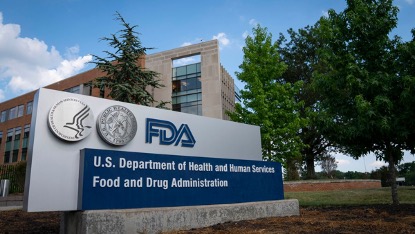FDA drafts guidance outlining real-world evidence for medical device submissions
December 21, 2023
Source: drugdu
 434
434

Dive Brief
The Food and Drug Administration posted a draft guidance on Monday clarifying how it evaluates real-world data in its decisions to clear or approve medical devices.
The draft is an update to a final guidance in 2017 and includes more detail on how the agency assesses the relevance and reliability of real-world data, study design elements and recommendations on documentation for FDA review.
An omnibus spending bill passed at the end of 2022 required the FDA to issue a draft guidance on the use of real-world data in premarket submissions. Two years after the public health emergency ended, the law also requires the FDA to specify how many requests for clearance or approval it has received and how many of those applications were approved or denied when real-world evidence was submitted.
Dive Insight
The 21st Century Cures Act, signed into law in 2016, created a framework for the FDA to use real-world evidence for regulatory decisions. In a final guidance issued a year later, the agency defined “real-world data” and “real-world evidence,” and provided an overview of how this information could be used to support its decisions on medical devices.
In its latest draft guidance, the FDA clarified how it evaluates real-world data and provided expanded recommendations to medical device sponsors considering using real-world evidence to support regulatory submissions.
For example, real-world data should be collected and processed in a “consistent and methodical manner,” to ensure reliability, the FDA said in the draft guidance. It should also include a sample size that is adequate to address the study question, and sponsors should provide a data audit trail.
The agency also listed recommended documentation for FDA review, including regulatory submission cover letters, a fit-for-purpose assessment of the real-world data, the study protocol and a report.
The FDA also shared some anonymized examples of how it has used real-world evidence to make regulatory decisions. In July, Johnson & Johnson received approval for some of its cardiac ablation devices to be used without fluoroscopy imaging. The decision was based on a prospective, observational registry study, a recent example of the agency using real-world evidence to review a medical device.
Source:
https://www.labmedica.com/pathology/articles/294799640/cutting-edge-lab-automation-system-supports-high-volume-needs-and-provides-faster-results.html
Read more on
- Betamethasone Sodium Phosphate Injection Approved January 9, 2026
- OpenAI releases two AI products in the healthcare field. January 9, 2026
- Say goodbye to lifelong medication? Hepatitis B patients may be entering an era of “functional cure”. January 9, 2026
- Xuantai Pharmaceutical’s “Isaconazole Sulfate for Injection” has been approved for marketing by the National Medical Products Administration, enriching new options for antifungal treatment January 9, 2026
- Fosun Pharma resubmits its application for listing of Furuitinib January 9, 2026
your submission has already been received.
OK
Subscribe
Please enter a valid Email address!
Submit
The most relevant industry news & insight will be sent to you every two weeks.



